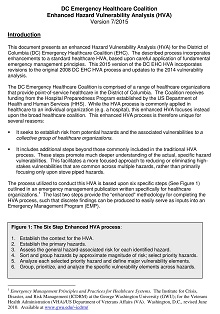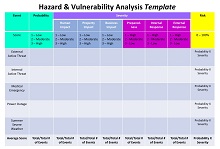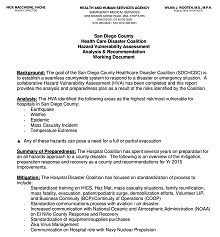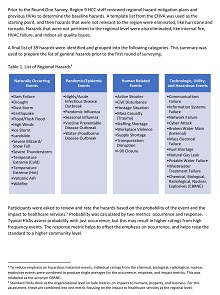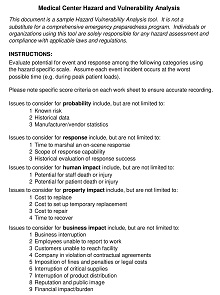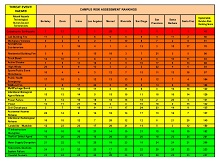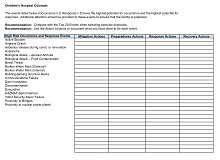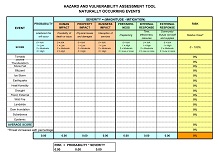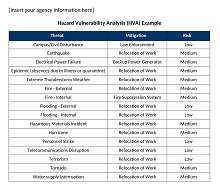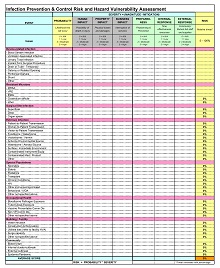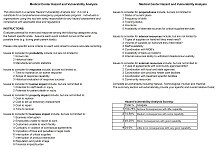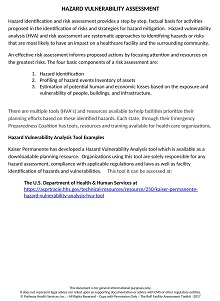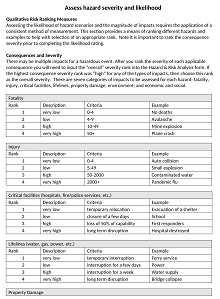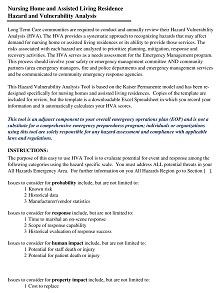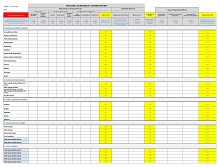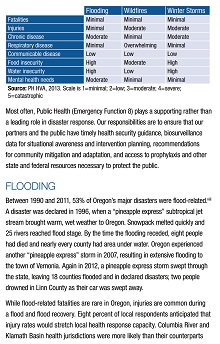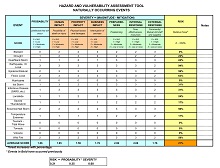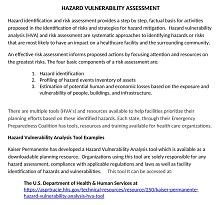30+ Free Hazard Vulnerability Analysis Templates (PDF, XLS, DOC)
Hazard vulnerability analysis (HVA) templates are a valuable tool for emergency responders, businesses, and others to plan for future disasters or potentially hazardous events. HVA templates consist of collected and analyzed data about possible hazardous outcomes regarding environmental, economic, physical, and social factors related to a given context. The template assesses the probabilities of a particular hazard and its potential range of impacts.
With this information, HVA templates can assess the overall risk associated with any particular hazard, enabling users to produce appropriate contingency plans to mitigate any dangers. In this manner, assistance can be received more quickly by responding personnel during an emergency rather than waiting until damages have occurred.
Download Free Hazard Vulnerability Analysis Templates
Importance of HVA for Organizations
Hazard Vulnerability Analysis (HVA) is a critical risk management tool for organizations of all sizes. By assessing current and potential environmental and safety hazards, these analyses can help organizations anticipate events that could lead to harm, financial losses, or reputational damage. HVAs analyze the vulnerability of physical infrastructure, operations, personnel, economy, and community to identify areas at the highest risk of harm due to natural disasters and other hazards.
This analysis allows an organization to assess necessary preventative measures and develop emergency plans tailored to their specific needs. Without performing an HVA, companies can run the risk of failing to provide adequate safety protocols when threats arise and be unprepared when disaster strikes. Utilizing HVAs is essential for any business as it provides a comprehensive view of managing risk exposures to mitigate harmful outcomes during emergencies.
Components of A Hazard Vulnerability Analysis Plan
A hazard vulnerability analysis plan is important in preparing for any natural disaster. It breaks down a region’s hazards and develops a logical, step-by-step approach for assessment, response, and recovery operations. Such a plan includes identifying and evaluating risks and hazards, developing planning strategies for mitigation activities, developing communication plans to alert people about potential danger, and establishing plans for coordinating evacuation routes amongst multiple agencies.
By creating an effective, comprehensive plan tailored to the specific environment, individuals can help ensure their safety before events occur. Engaging with local emergency management offices can provide expertise to create an effective plan.
Tools And Techniques For Hazard Identification
Various tools and techniques are used for hazard identification in any given work environment. To start, a hazard checklist is an essential tool for evaluating the risk associated with various tasks in the workplace. It can identify potential hazards with incident reports, process reviews, and safety observations. Root cause analysis is another technique that is highly recommended for determining what led to a near miss or an actual injury incident so that corrective action can be taken to eliminate the hazard before it happens again.
Finally, surveys among employees and interviews with supervisors can help uncover unseen or unknown threats due to their ability to bring attention to seemingly innocuous characteristics of the job setting that could be quite dangerous. By utilizing these tools and techniques appropriately, occupational safety professionals can assess risks accurately while keeping everyone safe.
Creating a Hazard Vulnerability Analysis Template for Your Business
An HVA is an important tool to help businesses identify, analyze, and plan for potential hazards. A Hazard Vulnerability Analysis template can assist in this process by providing structure and continuity to the data collected. Here is how to create an HVA template that works best for your business.
Identifying Potential Hazards
Any business needs to be prepared in case of emergency or disaster. As such, it’s essential to identify any potential hazards that could impact your operations. This includes natural hazards (such as floods, fires, and storms) and man-made disasters (such as acts of terrorism). By identifying all potential hazards, you can better understand what dangers you may face and how to prepare for them.
Gathering Data & Analyzing Risk
Once you’ve identified the possible hazards, it’s time to collect data related to each hazard and analyze the risk posed. You should consider factors such as the likelihood of a hazard occurring in your area, its severity if it does occur, and any steps you can take to reduce its impact or mitigate its effects. Once you have assessed the risk associated with each hazard, you can prioritize which ones need immediate attention and which may require more long-term planning.
Formatting Your Template
Now that you’ve gathered your data, it’s time to format it into an HVA template. To do this effectively, create columns labeled “hazard,” “likelihood,” “severity,” “impact,” “mitigation strategies/actions taken,” and so on. This will allow you to organize your information in a way that makes sense for your business needs. Once complete, ensure everyone in your organization has access to the template so they know what steps need to be taken in an emergency.

